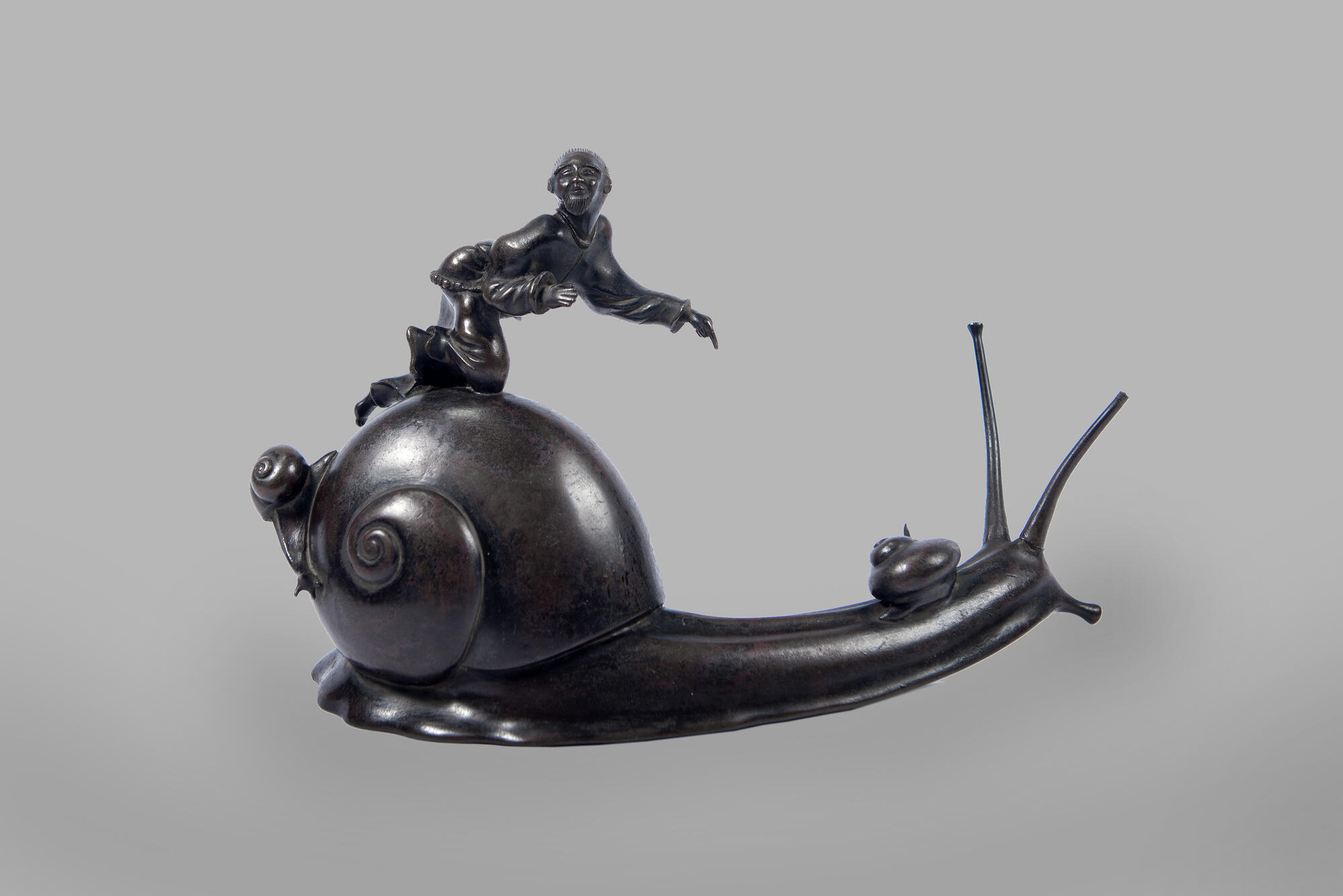In medieval Europe, snails were the epitome of sin and sloth, for they were born out of mud and fed on it. In the Renaissance, they came to symbolize modesty, and the fact that grape snails close in their shell with a lime lid and break it after the winter cold or drought, coming out again, made them symbols of Christ’s resurrection. According to Eastern beliefs the snail is a striking symbol of peace, tranquility, and success in achieving goals. In Japan, the snail was considered the lord of water. Snails were ascribed magical and healing properties, and were part of everyday magic and superstition. Snails have often been a source of inspiration for muses’ servants.
Bronze figurine “Snail”
Время создания
the late 19th century
Место создания
Western Europe
Размер
15x23x6 cm
Техника
casting
Коллекция
#12
#16
Wise emblem of our politic world,
Sage snail, within thine own self curl’d;
Instruct me softly to make haste,
Whilst these my feet go slowly fast.
Whilst these my feet go slowly fast.
The English poet Richard Lovelace wrote
#14
The snail was one of Salvador Dali’s talismans. The snail, nestled on the seat of a bicycle parked not far from Sigmund Freud’s house, struck a chord with Dali’s imagination.
The spiral shape of the shell has often made the snail one of the elements in mythological descriptions of the world. The spiral is a symbol of the center of space-time continuum, from which Creation begins to unfold.
The Kirsanov Local History Museum displays an old metal figurine “Snail”, which was used as a paper press and belonged to the poet A. M. Zhemchuzhnikov. This figurine can also be seen in the photo from the museum collection — it is on the desk of Olga Alekseevna Boratynskaya, the daughter of A. M. Zhemchuzhnikov. The snail blends in well with the interior of the house and embodies a philosophical idea of well-being.
The snail figurine was acquired by the poet A. M. Zhemchuzhnikov, most probably during his travels in Europe. Over 20 years (from 1863 to 1884) A. M. Zhemchuzhnikov lived abroad: in Germany, Switzerland, Italy, and France. Having returned to Russia, he spent a lot of time in Tambov and Kirsanov District, on the estate of his son-in-law Mikhail Boratynsky. At the time, similar souvenirs could often be found in the homes of Italy and some other European countries.
The spiral shape of the shell has often made the snail one of the elements in mythological descriptions of the world. The spiral is a symbol of the center of space-time continuum, from which Creation begins to unfold.
The Kirsanov Local History Museum displays an old metal figurine “Snail”, which was used as a paper press and belonged to the poet A. M. Zhemchuzhnikov. This figurine can also be seen in the photo from the museum collection — it is on the desk of Olga Alekseevna Boratynskaya, the daughter of A. M. Zhemchuzhnikov. The snail blends in well with the interior of the house and embodies a philosophical idea of well-being.
The snail figurine was acquired by the poet A. M. Zhemchuzhnikov, most probably during his travels in Europe. Over 20 years (from 1863 to 1884) A. M. Zhemchuzhnikov lived abroad: in Germany, Switzerland, Italy, and France. Having returned to Russia, he spent a lot of time in Tambov and Kirsanov District, on the estate of his son-in-law Mikhail Boratynsky. At the time, similar souvenirs could often be found in the homes of Italy and some other European countries.
#17
Bronze figurine “Snail”
#8
Ministry of Culture of the Russian Federation
читать дальшескрыть
00:00
00:00
1x
Bronze figurine “Snail”
Время создания
the late 19th century
Место создания
Western Europe
Размер
15x23x6 cm
Техника
casting
Коллекция
Открыть в приложении
Поделиться







